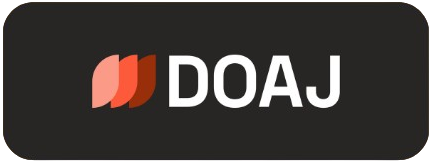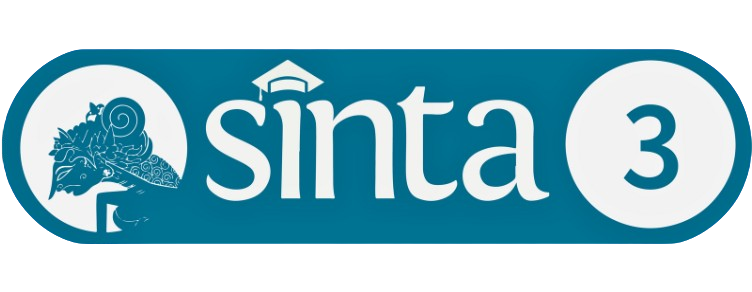Perilaku Prokrastinasi: Berbasis Performansi Kerja
Downloads
Procrastination is an intense behavior tendency to delay a task or a job for both short or long periods, which can create bad situations. Bad situations mentioned in this research are neither for the employee itself and for the organization widely. Procrastination could decrease employee's performance, organization effectiveness, and also could create stress conditions for others. The purpose of this research is to see the relation between an employee's procrastination behavior with their performance in organization. This research used Irrational Procrastination Scale (IPS) to measure the procrastination behavior tendency. Participant of this research is focused on employee that currently active in an organization, and has minimum a year of service.
Ferrari, J.R. (2018). Introduction to "Procrastination, Clutter and Hoarding”. Current Psychology (37), 424 – 425. https://doi.org/10.1007/s12144-018-9803-0
Galue, A. J. (1990). Perceived job ambiguity, predisposition to procrastinate, work-related information and experience: An investigation of procrastination behavior at work (Doctoral dissertation, Tulane University).
Gustavson, D. E., du Pont, A., Hatoum, A. S., Rhee, S. H., Kremen, W. S., Hewitt, J. K., & Friedman, N. P. (2017). Genetic and Environmental Associations Between Procrastination and Internalizing or Externalizing Psychopathology. Clinical Psychological Science, 5(5), 798-815. https://doi.org/10.1177%2F2167702617706084
Halim, F. W., Zaina, A., Khairudin, R., Shahrazad, W. S., Nasir, R., & Fatimah, O. (2011). Emotional Stability and Conscientiousness as Predictors toward Job Performance. Pertanika J. Soc. Sci & Hum., 19, 139-145.
Jagyasi, P. (2017). Stop Waiting for Signs Ways to Stop Procrastination Now. Diakses dari https://drprem.com/life/stop-procrastination-now
June, S., & Mahmood, R. (2011). The Relationship between Person–job Fit and Job Performance: A Study among the Employees of the Service Sector SME's in Malaysia. International Journal of Business, Humanities, and Technology, 1(2), 96–105.
Klassen, R. M., Krawchuk, L. L., Lynch, S. L., & Rajani, S. (2008). Procrastination and Motivation of Undergraduates with Learning Disabilities: A Mixed-Methode Inquiry. Learning Disabilities Research & Practice, 23(3), 137 – 147. https://doi.org/10.1111/j.1540-5826.2008.00271.x
Mashal, H. (2017). Uncontrolled Workplace Breaks and Productivity. (Doctoral dissertation, Walden University). https://scholarworks.waldenu.edu/dissertations/3309
Mulyani, S. (2010). Kemampuan Intelektual, Kebutuhan Berprestasi dan performansi Kerja di Perusahaan Alat Berat. Humanitas,7(1), 76-88.
Prayitno, G. E., Siaputra, I. B., & Lasmono, H. K. (2013). alidasi alat ukur irrational procrastination scale(Ips). CALYPTRA, 2(1), 1–7. https://journal.ubaya.ac.id/index.php/jimus/article/view/435
Zyphur, M. J., Chaturvedi, S., & Arvey, R. D. (2008). Job Performance Over Time Is a Function of Latent Trajectories and Previous Performance. Journal of Applied Psychology, 93(1), 217 – 224. https://doi.org/10.1037/0021-9010.93.1.217
Spector, P. E. (2008). Industrial and Organizational Psychology (5th ed). John Wiley & Sons, Inc.
Steel, P. (2007). The nature of procrastination: A meta-analytic and theoretical review of quintessential self-regulatory failure. Psychological Bulletin, 133(1), 65 – 94. https://doi.org/10.1037/0033-2909.133.1.65
Sugiyono. (2020). Metode Penelitian & Pengembangan: Research and Development. Alfabeta.
UPI. (n.d.). Makalah Kinerja. Diakses dari file.upi.eduDirektoriFPEB.
Copyright (c) 2022 Albert Adityas Nugraha J, Cholichul Hadi

This work is licensed under a Creative Commons Attribution-ShareAlike 4.0 International License.
BRPKM is a periodical publication with open access to the Creative Commons Attribution 4.0 International (CC-BY 4.0). Therfore, the copyright remains with the author.
With this license, anyone has the right to use the information and to re-distribute the content contained in this journal for any purpose, including commercial purposes. It can be done as long as it fulfills two conditions, namely; (1) you shall provide attribution by citing the original link source, and state if any changes have been made; and (2) you may not use any legal provisions or technological means of control that can legally restrict others from doing the things that are permitted by this license.
Journal editors will not ask the author to approve the transfer of copyright on all published manuscripts.










